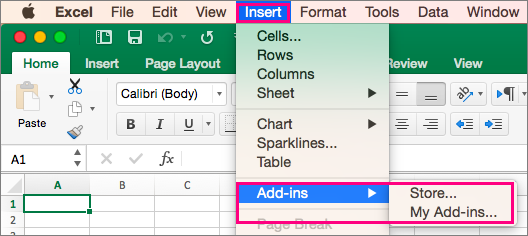

There are also third-party Add-Ins as well. When finished you can click the Add-Ins tab on the Ribbon to start using them. Click the Refresh link at the top right corner of the window if the add-in you just added to your account doesn’t yet appear here. Now just wait while Office installs the selected Add-Ins. Once you have, open the Office application you want to use the add-in with and click Insert > Add-ins > My Add-ins. Anyone who works with custom templates or add-ins understands how painful this process typically is. To start, open a terminal and set the OfficeWebAddinDeveloperExtras property for the relevant Office application as follows:ĭefaults write OfficeWebAddinDeveloperExtras -bool trueĭefaults write OfficeWebAddinDeveloperExtras -bool trueĭefaults write OfficeWebAddinDeveloperExtras -bool trueĭefaults write com.microsoft. Make sure you have Manage: Excel Add-ins selected and click the Go button and select the available Add-in from the resulting screen. If you don't have an Office Mac build, you can get one by joining the Microsoft 365 developer program. To be able to debug Office Add-ins on Mac, you must have Mac OS High Sierra AND Mac Office version 16.9.1 (build 18012504) or later. If you have add-in that shows UI in a task pane or in a content add-in, you can debug an Office Add-in using Safari Web Inspector. Debugging with Safari Web Inspector on a Mac
#HOW TO ADD ADD INS ON EXCEL WITH A MACBOOK HOW TO#
This article describes how to debug add-ins running on a Mac. Because add-ins are developed using HTML and JavaScript, they are designed to work across platforms, but there might be subtle differences in how different browsers render the HTML.


 0 kommentar(er)
0 kommentar(er)
